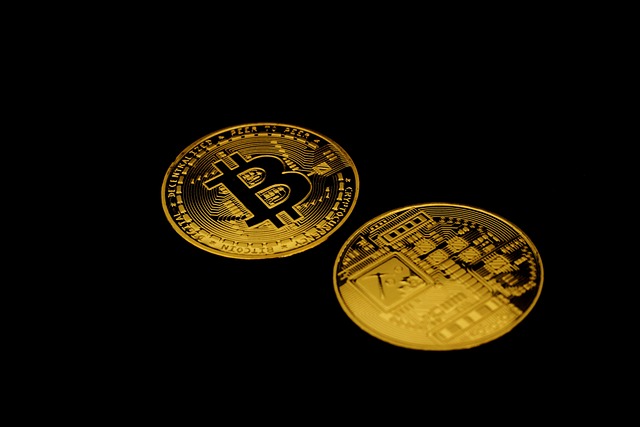Bitcoin vs Altcoin: An In-Depth Comparison
Author: Jameson Richman Expert
Published On: 2025-09-19
Prepared by Jameson Richman and our team of experts with over a decade of experience in cryptocurrency and digital asset analysis. Learn more about us.
The cryptocurrency landscape encompasses a vast array of digital assets, each with unique features, use cases, and market behaviors. For investors and enthusiasts alike, understanding the fundamental differences between Bitcoin and altcoins is vital to making informed decisions. While Bitcoin (BTC) remains the reigning pioneer and benchmark in the space, altcoins—short for "alternative coins"—offer a multitude of innovative functionalities, technological advancements, and investment opportunities. My personal journey through this universe was marked by experimentation, learning, and strategic refinement. In this comprehensive analysis, I will delve deeper into the technological foundations, market dynamics, and future prospects of Bitcoin versus altcoins, emphasizing the importance of research, platform selection, and disciplined investing.

Understanding Bitcoin: The Genesis of Cryptocurrency
Bitcoin was introduced in 2009 by the pseudonymous Satoshi Nakamoto, heralding a paradigm shift in how we perceive money and financial transactions. Built on a decentralized blockchain network, Bitcoin operates without a central authority, leveraging cryptographic algorithms to secure transactions and validate new coin creation through a process called mining. Its scarcity—capped at 21 million coins—creates a deflationary asset that has often been likened to digital gold. Over the past decade, Bitcoin has solidified its role as a store of value, a hedge against inflation, and a medium of exchange in certain contexts.
Technologically, Bitcoin’s architecture emphasizes security and censorship resistance, with a robust proof-of-work consensus mechanism that requires significant computational effort, contributing to its resilience but also raising concerns about energy consumption. The network’s decentralized nature ensures no single entity controls the supply or validation process, fostering trust among users. Its widespread adoption by institutional investors, inclusion in portfolios, and recognition by financial giants have bolstered its prominence, often dictating the overall market sentiment. However, regulatory developments—such as bans, restrictions, or acceptance—remain influential factors shaping Bitcoin’s trajectory.
What Are Altcoins? Exploring the Alternatives and Innovations
Altcoins encompass all cryptocurrencies launched after Bitcoin, aiming to improve upon or diversify away from Bitcoin’s foundational design. They often address specific limitations or introduce novel features such as faster transaction speeds, lower energy consumption, enhanced privacy, or programmable functionalities. The most influential altcoin, Ethereum (ETH), introduced the concept of smart contracts—self-executing agreements coded directly on the blockchain—thus enabling a new wave of decentralized applications (dApps) and decentralized finance (DeFi) platforms.
Beyond Ethereum, the altcoin universe includes Ripple (XRP), focusing on cross-border payments; Litecoin, offering faster transaction confirmation; Cardano, emphasizing academic research and scalability; Solana, known for high throughput; and privacy-centric coins like Monero and Zcash. These tokens often serve specific niches or communities, fostering innovation in areas such as interoperability, scalability, privacy, and gaming. However, many altcoins are highly speculative, with market valuations susceptible to hype, pump-and-dump schemes, and regulatory scrutiny. Conducting thorough due diligence—understanding their technological foundation, developer backing, community engagement, and real-world use cases—is critical before investing.
Market Dynamics: Interplay and Volatility of Bitcoin and Altcoins
The relationship between Bitcoin and altcoins is complex yet interconnected. Bitcoin frequently acts as the market’s anchor; during bullish phases, altcoins often rally in tandem, sometimes exhibiting amplified gains due to their smaller market caps. Conversely, when market sentiment deteriorates, altcoins typically experience sharper declines, reflecting their higher volatility and susceptibility to speculative trading. Market capitalization (market cap) serves as a vital indicator—Bitcoin’s large cap (~$600 billion as of 2023) provides relative stability, while many altcoins with smaller caps are more prone to manipulation and sudden price swings.
Additionally, liquidity differences influence trading strategies—Bitcoin’s high liquidity allows for large-volume trades with minimal slippage, whereas altcoins might require careful timing to avoid undue losses. Technical analysis tools such as candlestick patterns, moving averages, and volume indicators become essential for navigating these volatile waters. My own experience underscores the importance of risk management, setting stop-loss orders, and understanding macroeconomic factors, such as regulatory news or macroeconomic trends, that impact crypto markets globally.

Strategic Approaches: Investing and Trading in Bitcoin and Altcoins
Effective investment strategies differ markedly between Bitcoin and altcoins. For Bitcoin, a buy-and-hold (HODL) approach often proves successful due to its established resilience and acceptance. Many investors view Bitcoin as a long-term store of value, akin to digital gold, and accumulate during dips for eventual appreciation.
Altcoins, with their higher volatility, lend themselves to active trading strategies such as swing trading, day trading, or participating in initial coin offerings (ICOs) and token sales. These approaches require a keen understanding of technical indicators, market sentiment, and project fundamentals. Diversification is crucial—allocating funds across multiple coins reduces risk exposure. Setting clear entry and exit points, employing stop-loss orders, and staying updated with industry news are best practices I adopted over time.
Moreover, choosing the right exchange platform is vital. Reputable exchanges like Binance provide a broad range of cryptocurrencies, advanced trading tools, and strong security protocols. Other notable platforms include MEXC, Bitget, and Bybit, each offering unique features suited for different trading styles and risk appetites.
Choosing the Optimal Exchange Platform
Selecting a reputable exchange platform cannot be overstated. My early mistakes underscored how security, liquidity, and available trading pairs influence trading success. Binance, as one of the largest global exchanges, offers extensive coin selection, margin and futures trading, and robust security measures, making it suitable for both beginners and advanced traders. Additionally, features such as fiat gateways, staking, and savings accounts add value. Other platforms like MEXC and Bitget also provide competitive trading fees, innovative derivatives, and user-friendly interfaces.
Furthermore, consider regulatory compliance, customer support quality, and the availability of educational resources. Many exchanges offer demo accounts and trading simulators, which are invaluable for practicing strategies without risking real funds. As I learned, understanding the fee structures and withdrawal limits helps optimize net gains and avoid surprises.
Future Outlook: Trends and Innovations in Bitcoin and Altcoins
While predicting exact market trajectories remains challenging, analyzing technological trends and macroeconomic factors offers insights. Bitcoin’s role as a digital reserve asset seems poised to grow, especially with increasing institutional adoption, ETF approvals, and mainstream acceptance. Its scarcity and decentralized nature continue to attract long-term investors seeking protection against fiat currency devaluation.
Altcoins, on the other hand, are driving innovation through technological upgrades—such as Ethereum’s shift to proof-of-stake (Ethereum 2.0), interoperability protocols like Polkadot, and privacy enhancements in coins like Monero. The rise of Layer 2 solutions (such as Lightning Network for Bitcoin and Rollups for Ethereum) aims to solve scalability issues, reduce fees, and enhance user experience. Additionally, the expanding DeFi sector, non-fungible tokens (NFTs), and metaverse integrations suggest a vibrant future for altcoins with real-world applications.
My personal takeaway is that staying informed through reputable sources like CoinDesk, CoinTelegraph, and community forums, coupled with continuous learning, is crucial to capitalize on emerging opportunities. Patience, discipline, and adaptability will remain key virtues as the market evolves.

Conclusion: Embrace Continuous Learning and Strategic Growth
My journey into understanding Bitcoin versus altcoins has been transformative, filled with valuable lessons about risk, research, and resilience. The core advice I can offer is to prioritize education—delve into technological fundamentals, monitor regulatory developments, and practice disciplined trading. The crypto market’s inherent volatility presents risks but also significant rewards for those who approach it thoughtfully.
Whether you favor the stability and recognition of Bitcoin or seek the innovative potential of altcoins, the pathway to success involves starting small, staying informed, and gradually building your portfolio. Remember, continual learning, strategic planning, and patience are your best tools to navigate this dynamic and promising ecosystem.